
Universidade Fernando Pessoa
Porto, Portugal

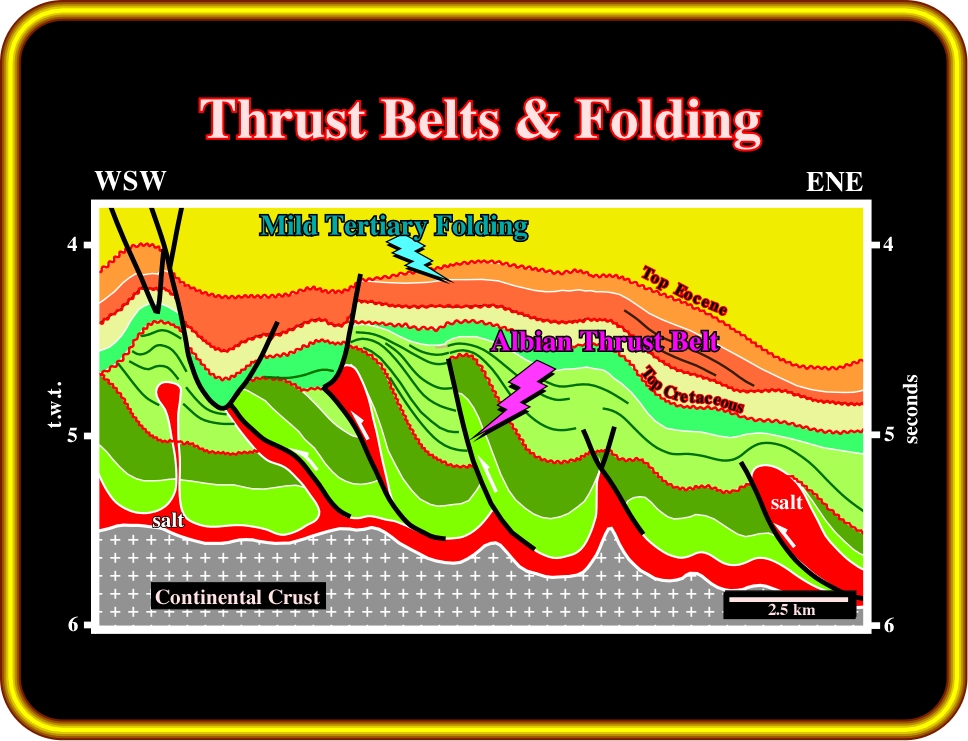
Plate 15- Where salt is very thin, thrust belts can also form. Albian thrusts detaching on thin Aptian salt in deepwater Lower Congo Basin off Angola. Thrusts verge seaward (to left). Landward (to right) they eventually change abruptly to extensional structures. Overlying the Albian imbricated thrusts, a wide Mid-Tertiary fold is clearly recognized.

Plate 16- Cretaceous contraction of strata above salt typically has the form of buckle folds. In places, however, the structural style is one of imbricated thrusting. Between the Albian thrust belts is a narrow extensional zone. This juxtaposition of such different structural styles suggests that the extensional zone is a region of strike-slip. Gentle, long-wavelength folding in the Neogene followed.

Plate 17- Now let’s move to less traditional, obvious signs of contraction on divergent margins. The salt and shale diapirs formed early, while the divergent margin was drowning. Progradation or coastal uplift then compressed these structures. Diapirs typically show an exaggerated response to even small amounts of regional shortening. Thus makes them sensitive strain gauges. In this example, Reactive diapirs were initiated by extension, as indicated by their triangular shape and abundance of normal faults at depth. Continued regional extension caused the diapir on the left to widen and sag as the salt source layer became depleted. This is recorded by green interval thickening toward diapir. Followed during Plio-Pleistocene (yellow interval) by gentle contraction, which inverted both diapirs.
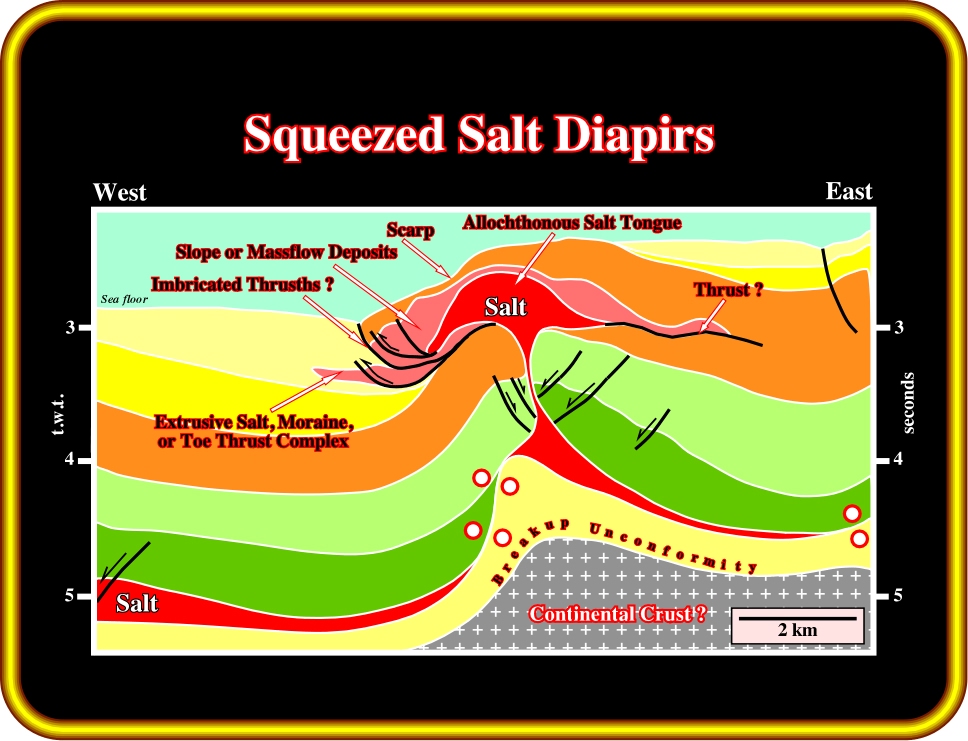
Plate 18- This diapir appear to have been squeezed until its feeder stem pinched off as a salt weld. Encasing strata buckled. The seaward limb of anticline was onlapped by Miocene strata. Salt was displaced upwards by lateral squeezing and was extruded at the surface to form two allochthonous salt glaciers at the same stratigraphic level. Toe thrust formed by spreading of bulging roof of diapir. Possible moraine left by dissolution of salt glacier.
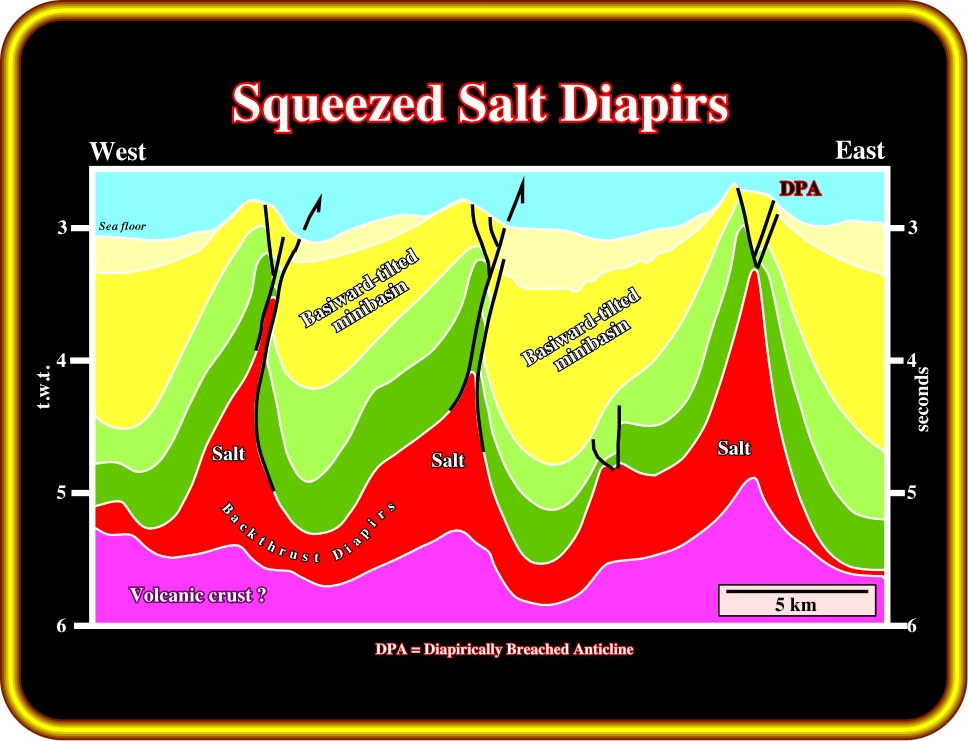
Plate 19- This lines illustrates: a) A Diapirically Breached Anticline on the right, b) The DBA represents a large, early-formed anticline created by buckling, c) Note the concordant limbs, so no salt diapir existed initially, d) Then the crest of anticline became diapiric when salt broke through, by combination of local stretching, slumping and erosion, e) Backthrust diapirs on left separate asymmetric minibasins tilted basinward (to left). These diapirs probably represent more highly evolution of DBA on right, f)These backthrusts diapirs shortened by the seaward limb being overthrust over the landward limb.
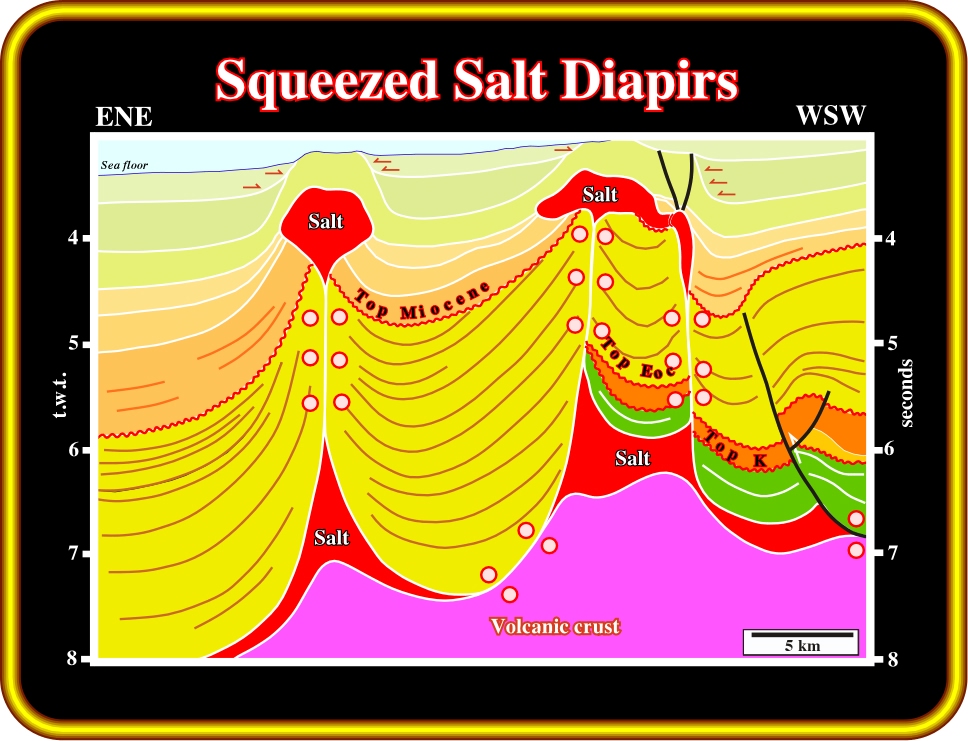
Plate 20- Salt walls can absorb large amount of translations from up-dip extension. As the sides of the squeezed diapir approach each other, the intervening salt was expelled upwards to form two types of structures: 1) Small allochthonous extrusions of salt ( right-hand diapir), which can coalesce to form salt canopies, 2) Arched isopachous roofs; onlapping strata date the time of diapir squeezing, following a period of stability, which formed the isopachous interval. Eventually, the salt walls can pinch off to form vertical salt welds, as shown here. Squeezed salt structures are probably capable of absorbing a lot of shortening because of their large numbers. For example, if 10 diapirs each 2 km wide pinch off, that would represent 20 km of total shortening.
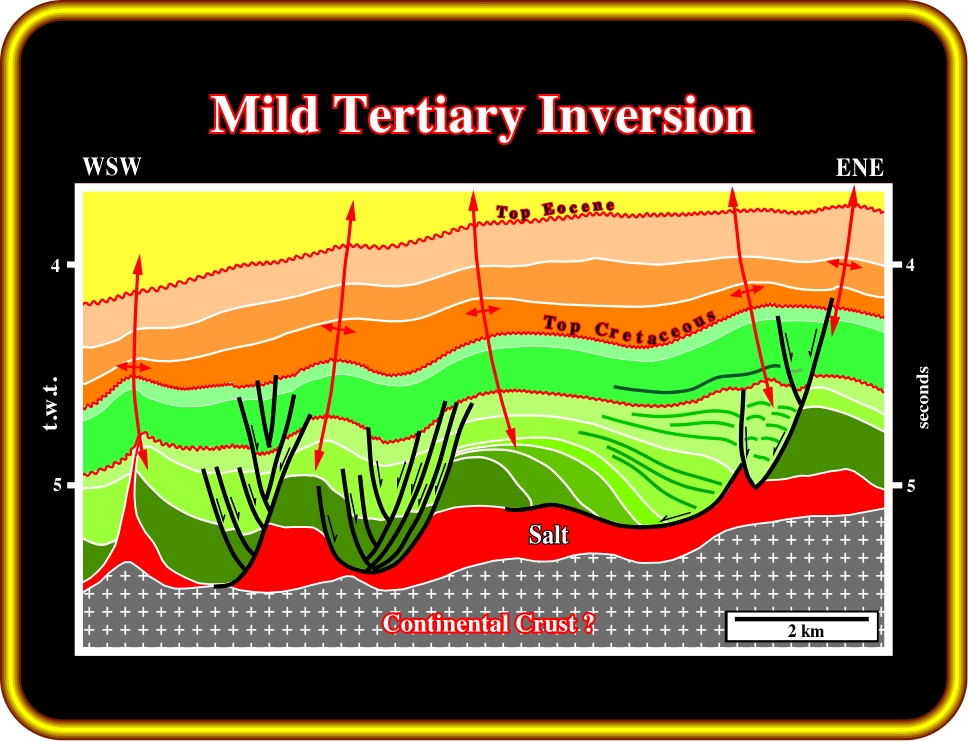
Plate 21- This example shows extensional structures of Albian overprinted by mild Tertiary buckling. The blue lines show the axial traces of Tertiary buckle anticlines.
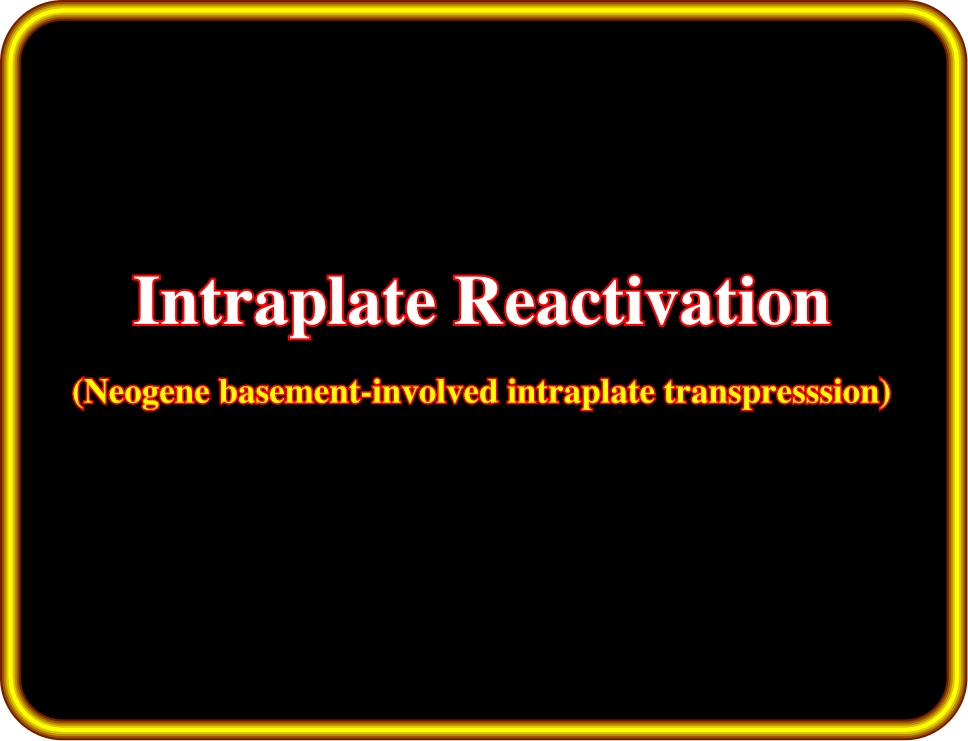
Plate 22- The least understood episode of contraction was driven by Neogene intraplate reactivation of major faults or fractures zones in the basement. The causes of this deformation are obscure, but the location of the deformation on the Angolan shelf precludes an origin by gravity spreading. The deformation style is one of localized, but intense folding of previously extruded or stable strata.
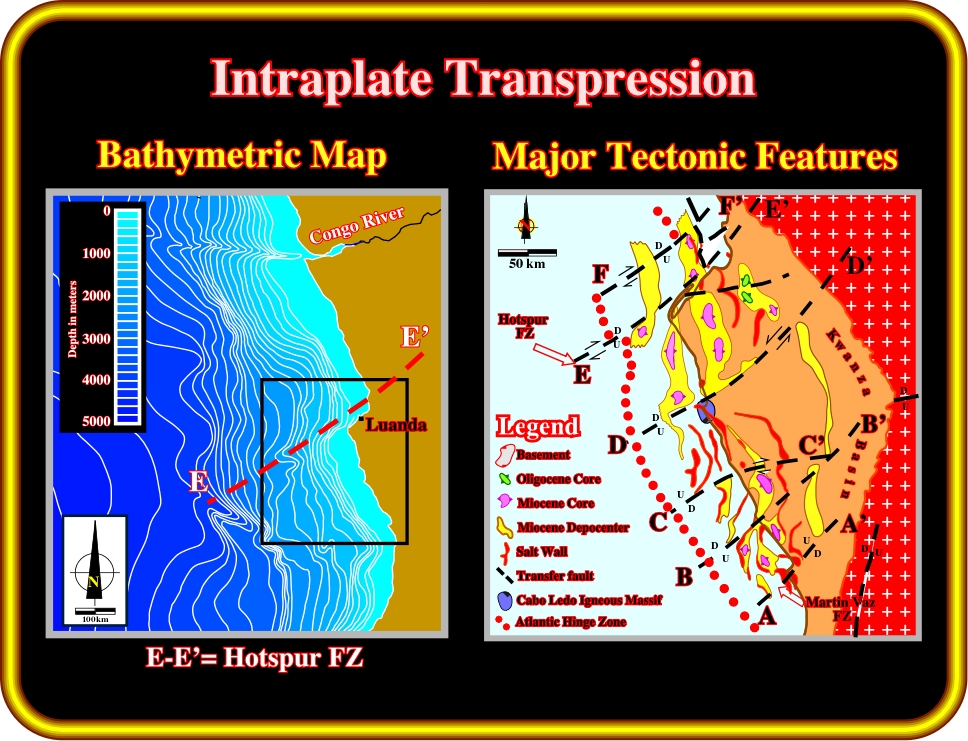
Plate 23- Perhaps the best documented example of Neogene contraction on the shelf is associated with reactivation of the Neogene Hotspur Fracture Zone, just north of Luanda. The trace of this and other fracture zones has only been mapped close to the shoreline. The Hotspur fracture forms a step down to the north in the base of the salt. It also coincides with a major right-lateral jog of the coastline, the shelf break, and the Atlantic Hinge Zone (red dots).
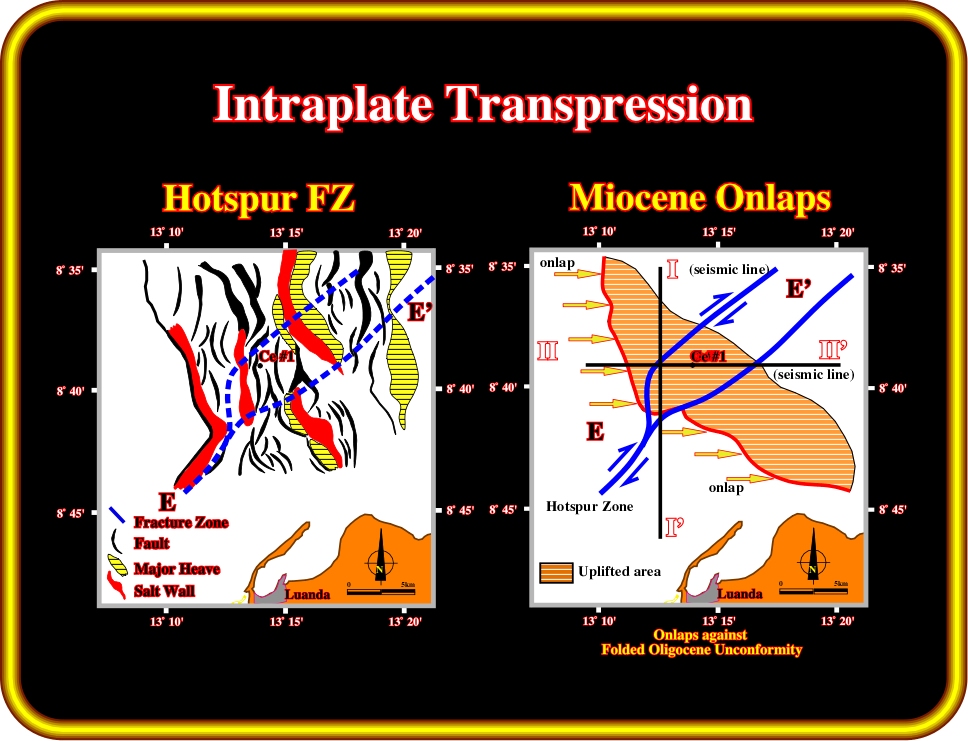
Plate 24- The Hotspur Fracture Zone bifurcates north of Luanda. Cegonha well#1 is located between the two fracture zone strands in the basement. These are overlain by normal faults and salt walls, which trend N or NNW. Note mapping of the onlaps against the folded Oligocene unconformity. The Cegonha region is illustrated by a N-S line (I-I’) and an E-W line (II-II’).
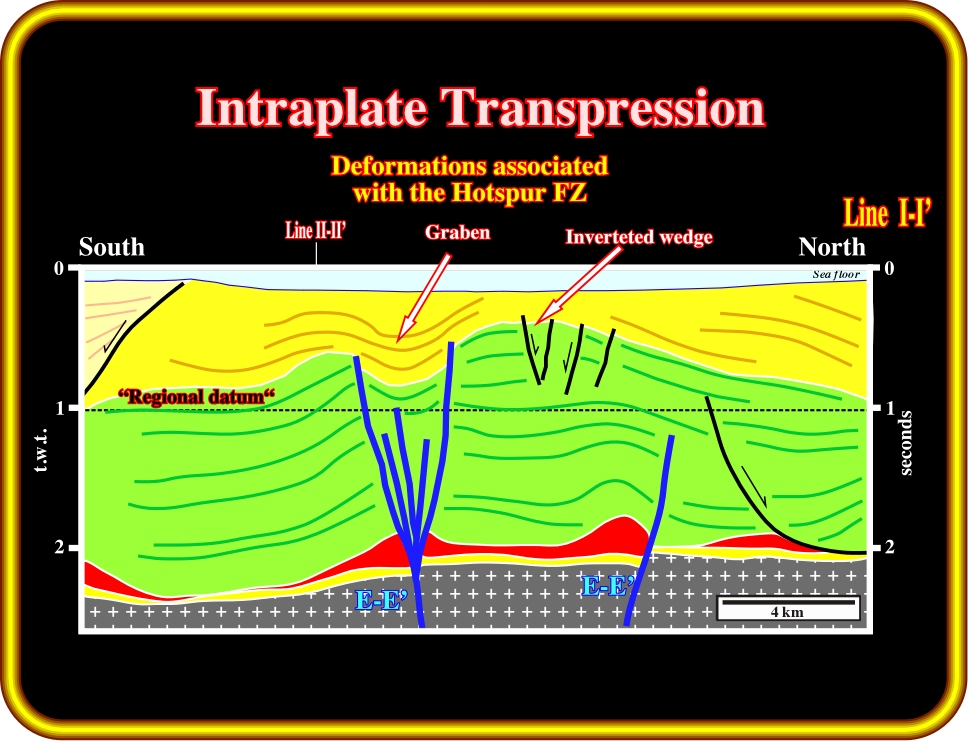
Plate 25- This line I-I’ crosses both fracture zones. The Hotspur zone is on the left. Strata are folded above regional on the southern side of Hotspur fracture zone. A graben appears to overlie the fracture zone. Between the fracture zones a thick wedge of pre-Oligocene strata has been inverted high above the regional datum.
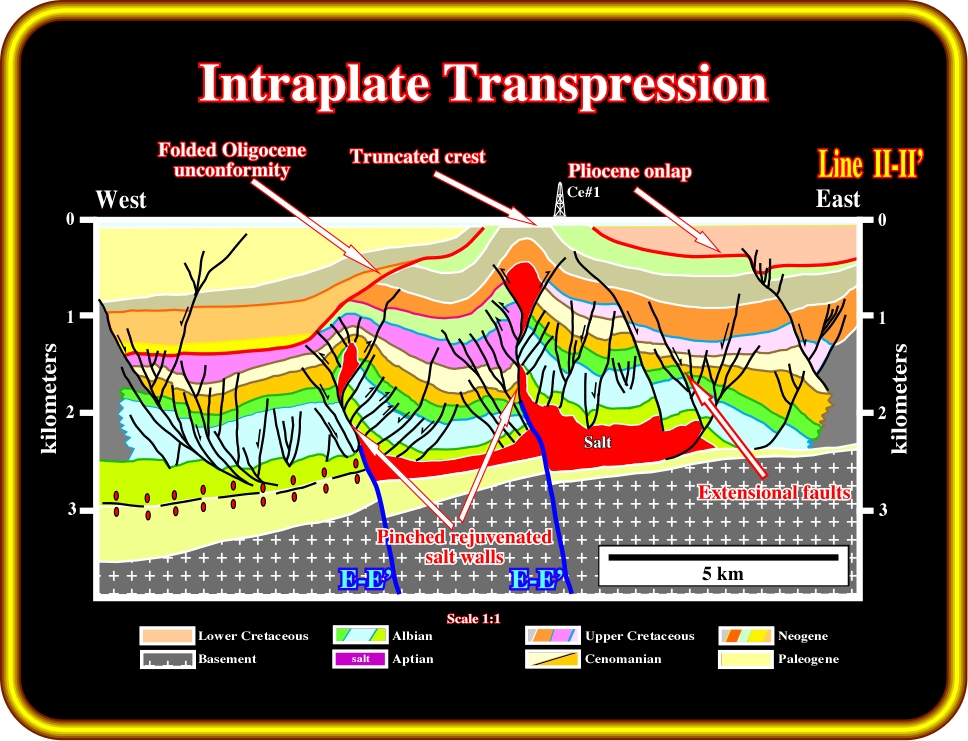
Plate 26- This depth-migrated seismic section shows the east-west cross section through the two salt walls, which overlie the Hotspur fracture zone ‘east) and its smaller offshoot (west). Numerous normal faults record an early episode of extension. This was followed and accompanied by passive growth of the two salt walls during the remainder of the Cretaceous and early Tertiary. After a period of dormancy, the Oligocene unconformity was cut and then onlapped by Miocene or Pliocene strata. During inversion, which resulted from the basement-involved fault reactivation, the passive diapirs acted as weak zones that localized the formation of two buckling anticlines above each salt wall. The location of this contractional deformation on the shelf precludes the origin by gravity spreading.
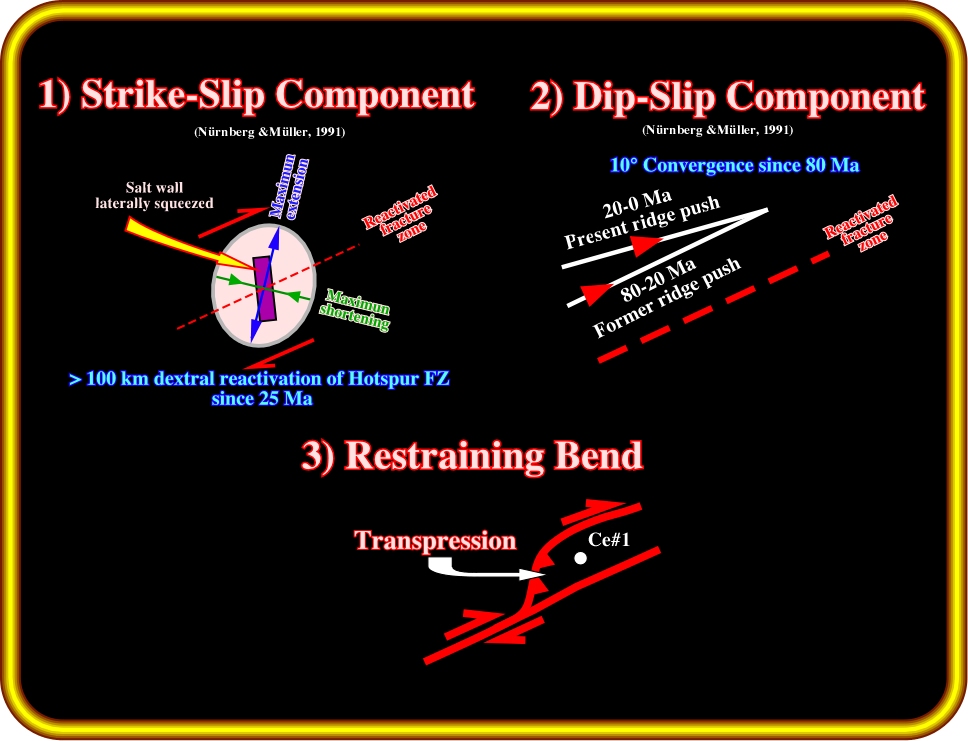
Plate 27- The Cegonha region was shortened and inverted by a combination of three possible related mechanisms: 1) Strike-slip Component. Changes in offsets of magnetic anomalies suggest that since 25 Ma, the Hotspur fracture zone was reactivated by > 100 km of dextral strike-slip. Much of this reactivation could have been absorbed by inhomogeneous strain, but some is likely to have been taken up by dextral strike slip at the continental margin. During dextral strike-slip since 25 Ma, the axis of maximum shortening would have been at a high angle to the trend of the Cegonha salt walls, as shown in the strain ellipse. This geometry would have resulted in the observed squeezing of the salt walls. 2) Dip-slip Component. At about 20 Ma, plate kinematics in the South Atlantic changed, so that the direction of the ridge push rotated 10° clockwise along the African Margin. This rotation have added a component of reverse dip slip to the Hotspur fracture zone. 3) Restraining Bend The observed bend in the bifurcation Hotspur fracture zone would have acted as a restraining bend during dextral strike slip, causing local transpressional E-W shortening in the Cegonha area.
Send E-mail to carloscramez@gmail.com with questions or comments about this conference.
Copyright © 2006 CCramez
Last modification:
August, 2014